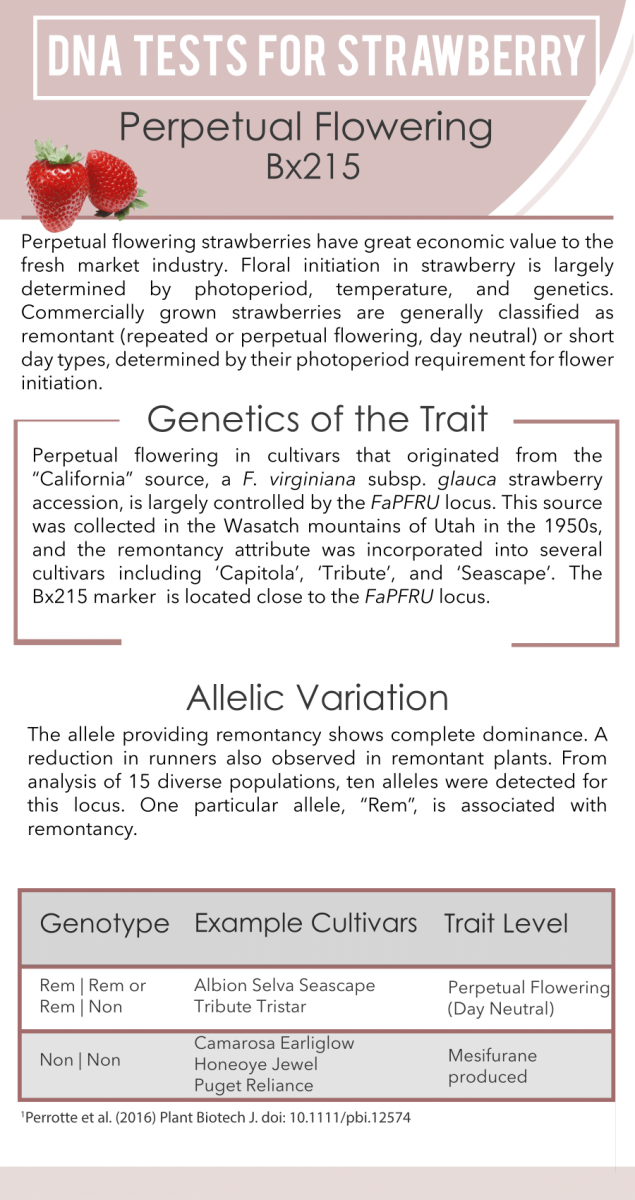Bx215: Strawberry Remontancy
What could be better than a single flush of juicy red strawberries? Two or even three more, of course! Floral initiation in strawberry is largely determined by photoperiod, temperature, and genetics. Commercially grown strawberries are generally classified as remontant (repeated or perpetual flowering) or short day types based on their photoperiod requirement for flower initiation. Perpetually flowering strawberries have great economic value to the fresh market industry.
Genetics
Perpetual flowering in cultivars that originated from this “California” source, an F. virginiana subsp. glauca strawberry from the Wasatch mountains of Utah, through cultivars such as ‘Capitola’, ‘Tribute’ and ‘Seascape’ is largely controlled by the FaPFRU locus. Located close the FPFRU locus, the A129 allele is highly associated with perpetual flowering. The alleles A143 and A160 confer June bearing habit.
Predictive Capacity
Assays across 15 populations comprising 4 strawberry subgenomes indicate ten alleles segregating at the Bx215 locus.
Data taken on U.S strawberry germplasm indicates that 69% of strawberries with A129 will be Perpetual Flowering and 91% of plants without A129 will not have the perpetual flowering trait. Under the right temperature conditions, breeders can realize up to 80% perpetual flowering with this test.
When to Assay
The Bx215 DNA test is particularly useful for choosing parental combinations leading to desired proportions of remontant (perpetually flowering) seedlings of the next generation. Where remontancy is required, this test can also be used to efficiently cull seedlings likely to be non-remontant prior to costly field planting.
Alleles

| Genotype | Cultivar | Trait |
|---|---|---|
|
129:136, 129:134, 136:143, 0:143 |
Seascape | perpetual flowering |
|
127:136, 0:136, 0:127, 126:158 |
Honeoye | short day (June bearing) |

Alleles Available
The allele providing remontancy shows complete dominance. A reduction in runners also observed in remontant plants. From analysis of 15 diverse populations, ten alleles were detected for this locus. One particular allele, “Rem”, is associated with remontancy.
Technical Details
Bx215 is a simple PCR-based test consisting of a single SSR marker.

